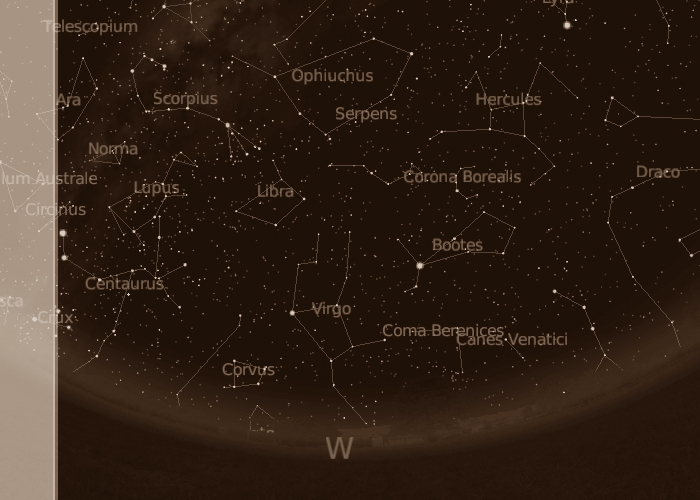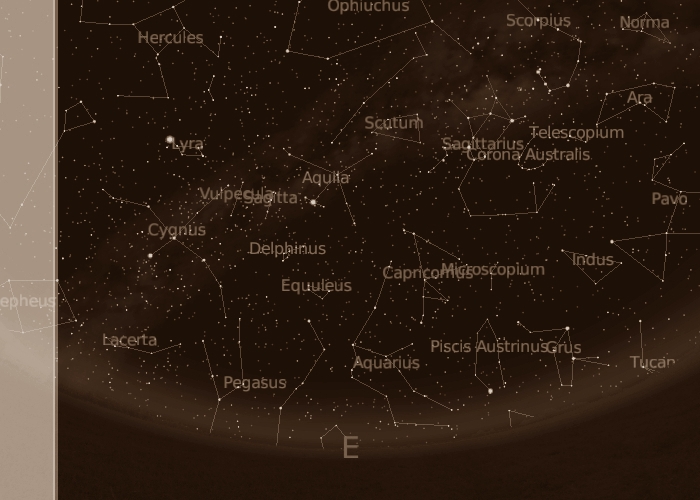Western Horizon
Eastern Horizon
Precisions About Daylight Saving Time (DST) Adjustments
![]()
Western Horizon
Eastern Horizon
Precisions About Daylight Saving Time (DST) Adjustments

It's the sky of the summer solstice which are now visible. In summer, we have the reversed situation of what we'd seen in winter, with the Milky Way-embedded constellations seen South and southwest. A fine view, from Crux, the Southern Cross, still low, to scorpius, the Scorpion, high. The Pointers are conspicuous, and Lupus, the Wolf, a fine sight too. Should you turn South, you'll easily spot, in Sagittarius, the Archer, the conspicuous center for our Milky Way Galaxy. As we're located inside the Milky Way, we can't see it under its form of a spiral galaxy but this faintly glowing band of myriads of faint and faraway stars. At that season, we have the access to the center of it, there we the large bulge of old, yellowish stars is located, along with the galactic supermassive black hole. A black hole, in the Universe, is a place of a higher density, the highest in the Universe, whence nothing, not even light, may get out, once trapped there. The supermassive black hole of our Milky Way is wide like the orbit of Mercury! Arcturus, of Bootes, the Herdsman, is slightly northwest, with another bright star, West, being Spica of Virgo. The Dipper's handle is seen northwest, as, South, under Sagittarius and scorpius, small, typical southern constellations are seen. to a printer-friendly chart
West for the mid-northern latitudes. West for the mid-southern latitudes

The whole southeastern part of the sky, East, is filled with typical southern constellations, like Microscopium, the Microscope, Indus, the Indian, or Grus, the Crane -albeit low for the latter. The Milky Way, arching, is bringing you to the 'Summer Triangle', this distinctive feature of the summer skies in the northern hemisphere. The Summer Triangle is a large triangle of stars, the spikes of which are composed by the three main, bright stars to constellations Cygnus, the Swan, Lyra, the Lyra, and Aquila, the Eagle. The topmost star, now, high northeast, is Vega of Lyra. Both others are Deneb, of Cygnus, and Altair, of Aquila. A part of Draco, the Dragon, North, or Hercules, the Heroe, with the famed M13 globular cluster, are fine views. to a printer-friendly chart
East for the mid-northern latitudes. East for the mid-southern latitudes
->Contrarily to what is seen in the northern hemisphere, or the southern, equatorial and tropical countries do not have any Daylight Saving Time (DST), as at these latitudes days are equaling nights all year long
Website Manager: G. Guichard, site 'Amateur Astronomy,' http://stars5.6te.net. Page Editor: G. Guichard. last edited: 12/28/2010. contact us at ggwebsites@outlook.com